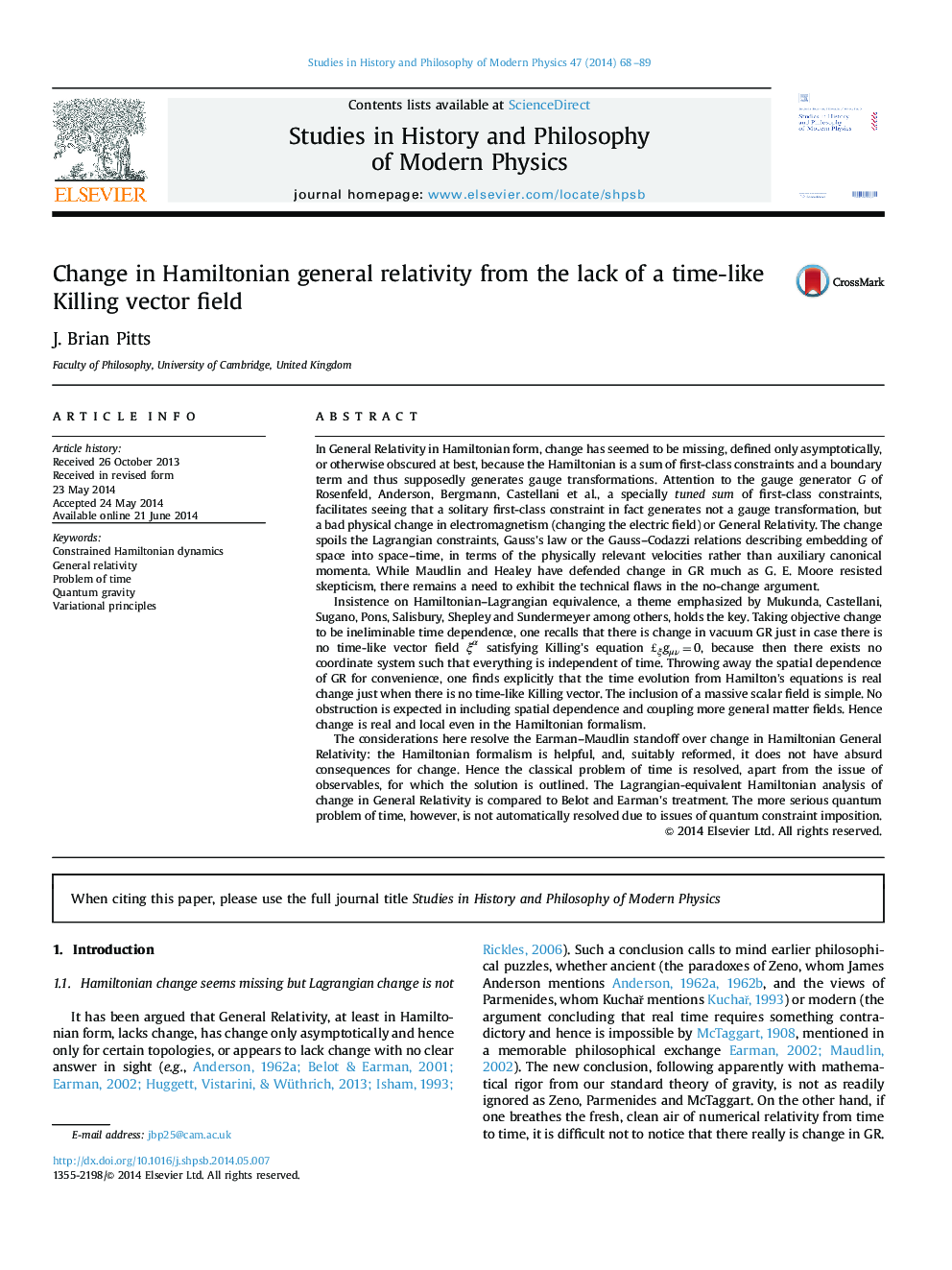| کد مقاله | کد نشریه | سال انتشار | مقاله انگلیسی | نسخه تمام متن |
|---|---|---|---|---|
| 1161534 | 1490431 | 2014 | 22 صفحه PDF | دانلود رایگان |
• A reforming trend requiring the Hamiltonian to be equivalent to the Lagrangian is extended.
• That first-class constraints don׳t generate gauge transformations is seen by direct calculation.
• The GR Hamiltonian, a sum of first-class constraints, thus can still generate real evolution.
• The Hamiltonian equations exhibit time dependence just when there is no time-like Killing vector.
In General Relativity in Hamiltonian form, change has seemed to be missing, defined only asymptotically, or otherwise obscured at best, because the Hamiltonian is a sum of first-class constraints and a boundary term and thus supposedly generates gauge transformations. Attention to the gauge generator G of Rosenfeld, Anderson, Bergmann, Castellani et al., a specially tuned sum of first-class constraints, facilitates seeing that a solitary first-class constraint in fact generates not a gauge transformation, but a bad physical change in electromagnetism (changing the electric field) or General Relativity. The change spoils the Lagrangian constraints, Gauss׳s law or the Gauss–Codazzi relations describing embedding of space into space–time, in terms of the physically relevant velocities rather than auxiliary canonical momenta. While Maudlin and Healey have defended change in GR much as G. E. Moore resisted skepticism, there remains a need to exhibit the technical flaws in the no-change argument.Insistence on Hamiltonian–Lagrangian equivalence, a theme emphasized by Mukunda, Castellani, Sugano, Pons, Salisbury, Shepley and Sundermeyer among others, holds the key. Taking objective change to be ineliminable time dependence, one recalls that there is change in vacuum GR just in case there is no time-like vector field ξαξα satisfying Killing׳s equation £ξgμν=0£ξgμν=0, because then there exists no coordinate system such that everything is independent of time. Throwing away the spatial dependence of GR for convenience, one finds explicitly that the time evolution from Hamilton׳s equations is real change just when there is no time-like Killing vector. The inclusion of a massive scalar field is simple. No obstruction is expected in including spatial dependence and coupling more general matter fields. Hence change is real and local even in the Hamiltonian formalism.The considerations here resolve the Earman–Maudlin standoff over change in Hamiltonian General Relativity: the Hamiltonian formalism is helpful, and, suitably reformed, it does not have absurd consequences for change. Hence the classical problem of time is resolved, apart from the issue of observables, for which the solution is outlined. The Lagrangian-equivalent Hamiltonian analysis of change in General Relativity is compared to Belot and Earman׳s treatment. The more serious quantum problem of time, however, is not automatically resolved due to issues of quantum constraint imposition.
Journal: Studies in History and Philosophy of Science Part B: Studies in History and Philosophy of Modern Physics - Volume 47, August 2014, Pages 68–89
